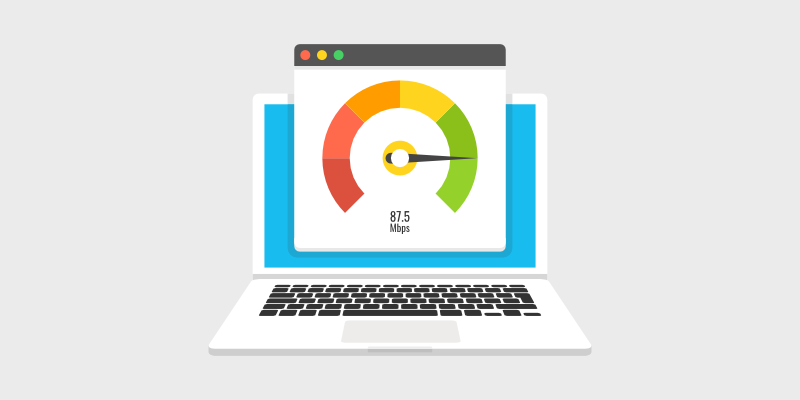Why Might Your Internet Speed Vary Throughout the Day?

Internet speeds do not always stay the same throughout the day. At certain times, connections feel smooth and fast, while at other times they may slow down without warning. These fluctuations happen because everyday factors—like network congestion, equipment performance, and household usage—directly affect how much bandwidth is available.
These changes can influence work, streaming, gaming, and browsing. Recognizing the patterns behind shifting speeds helps explain why connections vary and what can be done to keep them steady.
Network congestion during peak hours limits bandwidth
Internet speeds often slow down during peak hours because many people use the network at the same time. This high demand can exceed the available capacity, which causes delays in data transfer.
Peak hours usually occur in the evening after work or school. At this time, more households stream videos, play online games, and make video calls. As a result, the network must handle far more traffic than during quieter periods.
Service providers allocate a set amount of bandwidth to each area. If too many users share that bandwidth, each connection may receive less speed. This effect is similar for both wired and wireless networks.Providers like Digicel network services actively invest in expanding capacity, which helps reduce congestion and ensures that customers enjoy smoother browsing and streaming even during peak hours.
Some users may notice buffering in videos or lag in online games during these hours. Others might see slower download and upload speeds. The impact often depends on the type of internet connection and the capacity of the local network.
Upgrading equipment or choosing a faster plan can sometimes reduce the slowdown, but congestion can still occur if demand stays high.
ISP throttling reduces speeds in the evening
Some internet providers slow down certain types of traffic during high-demand hours. This practice, called throttling, helps them manage network congestion but can lower speeds for users. Evening hours often see more throttling because more people stream videos, play games, or download files.
Throttling does not always affect all websites or services equally. Providers may target specific activities, such as video streaming, while leaving basic browsing mostly unaffected. This can make the slowdown feel inconsistent.
Users may notice the issue if video quality drops or downloads take longer at night. Speed tests run with and without a VPN can reveal differences that suggest throttling.
Providers may also reduce speeds after a customer reaches a monthly data limit. In that case, slower speeds can last until the next billing cycle. Understanding these patterns can help people identify if throttling is the cause of their evening slowdowns.
High usage on weekends causes slower speeds throughout the day
Internet traffic often rises on weekends because more people stay at home and spend time online. Many households stream videos, play games, or join video calls during the day. This heavier demand can cause network congestion.
Unlike weekdays, usage does not drop much during work hours on weekends. As a result, slower speeds can occur from morning until late evening. This pattern affects both urban and rural areas, though the impact may vary based on local network capacity.
Service providers may also manage bandwidth to handle the surge in activity. This practice can limit speeds for certain users during busy periods. Therefore, even those with high-speed plans might notice delays or buffering.
In addition, shared connections in apartment buildings or neighborhoods can feel the strain. More devices online at the same time lead to less bandwidth for each user. This effect becomes more noticeable in areas with older infrastructure or fewer upgrades.
Wi-Fi signal interference affects connection quality
Wi-Fi uses radio waves to send data between devices and the router. Other devices that use similar frequencies can interrupt this signal. As a result, the connection may slow down or drop.
Common sources of interference include cordless phones, microwaves, and Bluetooth devices. Walls, floors, and large furniture can also weaken the signal by blocking or absorbing it.
Nearby networks can cause problems if they use the same channel as your router. This often happens in apartments or crowded areas with many Wi-Fi networks.
Changing the router’s channel can reduce interference from other networks. Placing the router in a central, open spot can also help improve signal strength.
Electronic clutter near the router may create noise that disrupts the signal. Keeping the area around the router clear can make the connection more stable.
Interference often causes speed changes throughout the day, especially if more devices operate during certain hours. Identifying and reducing these sources can lead to a smoother connection.
Multiple devices consuming bandwidth simultaneously
Each device on a network uses part of the available bandwidth. Phones, laptops, TVs, and smart home devices all share the same internet connection. As more devices connect, each one may receive a smaller share of the total speed.
High-demand activities, such as streaming video or online gaming, use more bandwidth than simple web browsing. If several people in a home stream or download large files at the same time, speeds for others can slow down noticeably.
Older routers or outdated network equipment can make the issue worse. Even with a fast internet plan, the hardware may struggle to handle many active connections at once.
Peak usage times in a household can overlap with peak usage in the area. This can further reduce available speeds, especially if the internet provider’s network is under heavy demand.
Limiting simultaneous high-bandwidth activities or upgrading equipment can help maintain more consistent speeds across devices.
Conclusion
Internet speed often changes due to factors such as peak usage hours, network congestion, and equipment performance. Speeds may drop in the evening as more people connect at the same time, while early mornings often see less demand.
Other influences include router placement, signal interference, and the type of connection in use. Wired connections usually provide steadier speeds than wireless ones.
By understanding these patterns, users can adjust their online activities to match times of better performance. They can also improve their setup to reduce slowdowns caused by home network issues.



